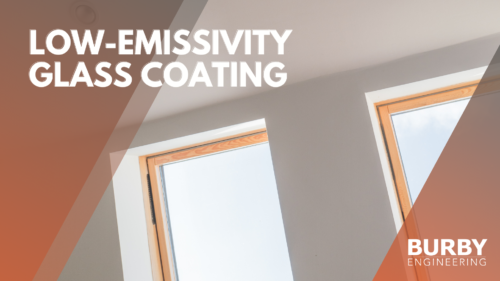Low-Emissivity Glass Coating

In an effort to reduce energy use in buildings, there have been increased energy performance requirements for newly-constructed and renovated properties. When it comes to energy efficiency, it is critical to take a look at both windows and skylights. Since these fenestrations are transparent, they allow the passage of heat and light, meaning that thermal losses and gains are usually greatest at these locations.
Low-emissivity, or low-e, coating is a product that was developed to help minimize the amount of UV light and heat waves that can pass through glass without compromising the amount of light transmission. These coatings are microscopically thin, transparent metallic glass coatings that are usually installed on insulated glass (IG) units. IG units consist of at least two glass panes separated by an air gap. The low-e coatings are typically applied to the inner surface of the interior or exterior glass pane (within the air gap), depending on the climate where the window will be in service.
For warmer climates like Florida’s, the purpose of low-e coating is to keep the heat out of the building, so the low-e coating should be installed on the exterior glass pane to reflect the solar heat back outside before it enters the insulating air gap of the window. This will help preserve the cool air inside the building. For colder climates, the intent of low-e coating is to minimize the heat loss through the window and maximize the solar heat provided by the sun. In this scenario, the low-e coating should be applied to the interior glass pane to allow the heat to pass through the window and reflect the heat back inside.
Because of the transparency of low-e coatings, it can often be difficult to detect the surface on which it was applied on. Building owners who decide to install low-e windows pay a higher price with the understanding that costs can be recouped in the long run with reduced electricity bills. If the low-e coating is installed on the wrong glass surface, then the efficiency can be significantly reduced, or even negated. Burby Engineering is adept in handling issues related to low-e coating installations and other window-related issues. Contact our team to learn more!
